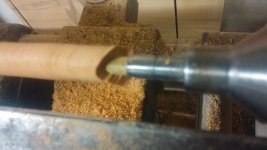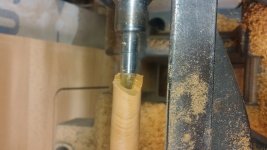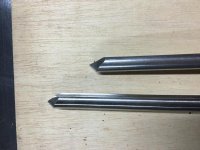martin.pearson
Full Member
Had this happen a few times now & running out of comfort pen rubber bits lol I did try searching the forums but anyone that knows me will tell you I am rubbish at searching forums.
Apart from a couple of Burs which I was half expecting because my method of stabalising consists of trying to fill them with very runny superglue this has only happened with cross cut or diagonally cut blanks, in this case a 45 degree cut piece of Yew & always at the right hand end if your facing the lathe.
My first thought was that it might be a glue problem but why always just the one end & why only on cross cut blanks?
Any help would be much appriciated so I don't have to but more comfort pens just for the rubber bits lol
Apart from a couple of Burs which I was half expecting because my method of stabalising consists of trying to fill them with very runny superglue this has only happened with cross cut or diagonally cut blanks, in this case a 45 degree cut piece of Yew & always at the right hand end if your facing the lathe.
My first thought was that it might be a glue problem but why always just the one end & why only on cross cut blanks?
Any help would be much appriciated so I don't have to but more comfort pens just for the rubber bits lol







